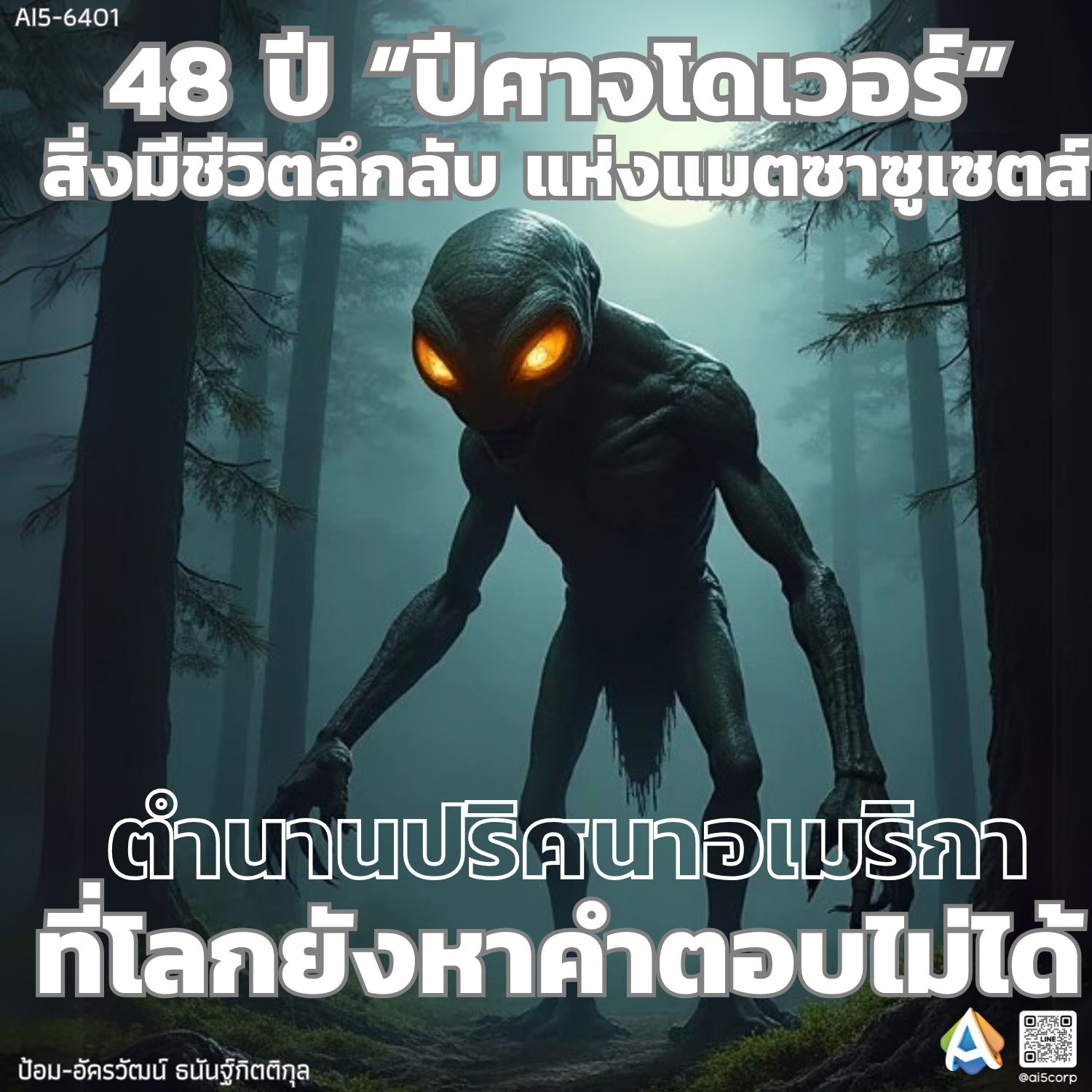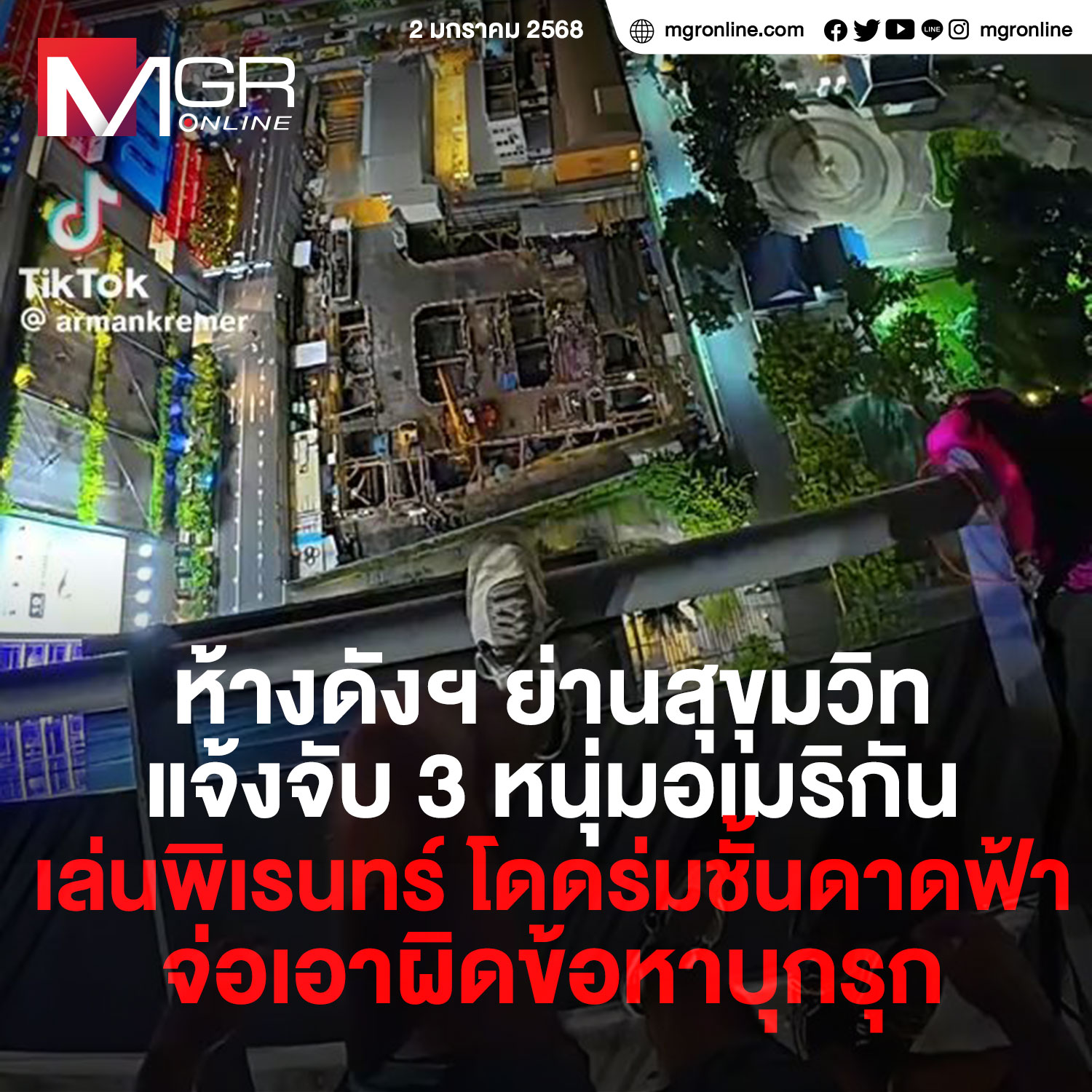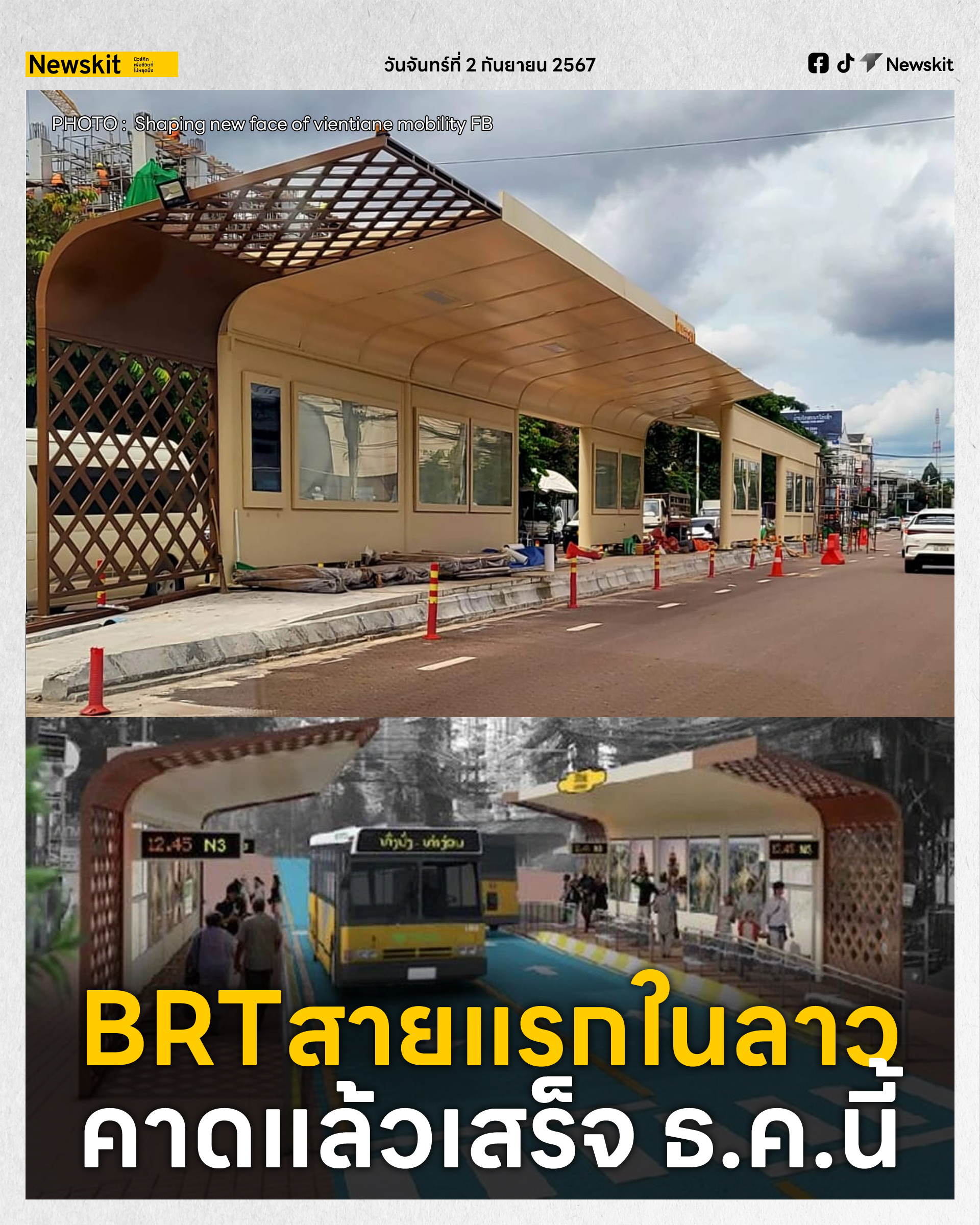รวมข่าวจากเวบ TechRadar
#รวมข่าวIT #20251218 #TechRadar
มินิพีซีราคาสุดคุ้มที่ AI ยังยกนิ้วให้
เรื่องนี้เล่าถึงการท้าทายตัวเองของนักเขียนที่พยายามประกอบคอมให้แรงกว่ามินิพีซี Machenike ที่ขายในราคาเพียง 379 ดอลลาร์ แต่สุดท้ายกลับแพ้ เพราะแค่ CPU และ RAM ก็เกือบเท่าราคาทั้งเครื่องแล้ว เมื่อรวมทุกชิ้นส่วน ค่าใช้จ่ายพุ่งไปเกือบ 570 ดอลลาร์ ยังไม่รวมค่าไลเซนส์ Windows อีก ทำให้เห็นชัดว่าการซื้อเครื่องสำเร็จรูปในช่วงที่ตลาดชิ้นส่วนแพงขึ้นนั้นคุ้มกว่าเยอะ AI อย่าง ChatGPT ถึงกับบอกว่า “คุ้มสุด ๆ” ส่วน Gemini ก็ว่า “ราคานี้บ้าไปแล้ว” สรุปคือใครที่อยากได้เครื่องแรง ๆ ในงบจำกัด การซื้อสำเร็จรูปคือทางเลือกที่ไม่เสียเวลาและไม่เจ็บกระเป๋า
https://www.techradar.com/pro/chatgpt-calls-this-mini-pc-a-steal-while-gemini-says-its-insane-value-for-money-meet-the-usd379-amd-ryzen-7-8745hs-powerhouse-that-ai-is-raving-about
ปัญหา Windows ล่าสุดที่ทำธุรกิจปวดหัว
Microsoft ออกแพตช์ประจำเดือนธันวาคม แต่ดันทำให้บริการ MSMQ บน Windows Server และ Windows 10 สำหรับองค์กรมีปัญหา ส่งผลให้แอปและเว็บไซต์ที่ใช้ IIS ทำงานผิดพลาด ทั้งคิวที่ไม่ทำงาน การเขียนข้อมูลล้มเหลว และข้อความแจ้งว่า “ทรัพยากรไม่เพียงพอ” ทั้งที่จริง ๆ มีอยู่เต็ม ๆ ตอนนี้ Microsoft ยังไม่มีแพตช์แก้ไขถาวร แต่แนะนำให้ธุรกิจติดต่อฝ่ายสนับสนุนโดยตรงเพื่อหาทางแก้หรือย้อนกลับการอัปเดตไปก่อน
https://www.techradar.com/pro/security/having-windows-app-issues-microsoft-is-making-businesses-reach-out-directly-to-get-a-fix
สิ่งที่ต้องจำเมื่อใช้แชตบอท AI
บทความนี้เตือนว่าเวลาคุยกับแชตบอท AI อย่าลืมว่าข้อมูลที่เราพิมพ์ไปอาจไม่หายไปไหน บางครั้งบริษัทที่พัฒนา AI มีทีมงานที่เห็นข้อมูลจริง ๆ ซึ่งอาจรวมถึงข้อมูลส่วนตัว เช่น วันเกิดหรือเลขบัญชี หากไม่ได้ลบออกก่อน การแชร์เอกสารทั้งฉบับกับบอทก็เสี่ยงมาก เพราะข้อมูลอาจถูกนำไปใช้ฝึกโมเดลต่อไปโดยไม่รู้ตัว ผู้เขียนจึงย้ำว่าทั้งธุรกิจและผู้ใช้ต้องมีวินัยในการจัดการข้อมูล ไม่ใช่แค่ปิดบัง แต่ต้องลบให้ถาวรเพื่อสร้างความเชื่อมั่นในยุคที่ AI ถูกใช้แพร่หลาย
https://www.techradar.com/pro/5-things-businesses-and-users-should-remember-when-using-ai-chatbots
ช่องโหว่เก่าของ Asus ที่ยังตามหลอกหลอน
CISA ของสหรัฐฯ ออกประกาศเตือนถึงช่องโหว่ในโปรแกรม Asus Live Update ที่เคยถูกโจมตีตั้งแต่ปี 2018–2019 โดยมีการฝังโค้ดอันตรายลงในเซิร์ฟเวอร์อัปเดต ทำให้เครื่องที่ดาวน์โหลดตัวติดตั้งบางรุ่นถูกควบคุมได้ ช่องโหว่นี้ถูกจัดเป็นระดับวิกฤติ และหน่วยงานรัฐต้องแก้ไขภายในต้นเดือนมกราคม แม้โปรแกรมจะหมดการสนับสนุนไปแล้ว แต่ก็ยังมีผลกับเครื่องที่ใช้เวอร์ชันเก่า ๆ องค์กรเอกชนก็ถูกแนะนำให้รีบอัปเดตหรือหยุดใช้งานเช่นกัน
https://www.techradar.com/pro/security/cisa-reveals-warning-on-asus-software-flaw-heres-what-you-need-to-do-to-stay-safe
กริ่งประตู Ring ที่พูดตอบเองได้ด้วย Alexa+
Ring เปิดตัวฟีเจอร์ใหม่ชื่อ Alexa+ Greetings ที่ใช้ AI ช่วยตอบคนที่มากดกริ่ง โดยมันสามารถแยกแยะว่าใครมา เช่น คนส่งของ เพื่อน หรือแม้แต่เซลส์แมน แล้วตอบกลับตามคำสั่งที่เจ้าของตั้งไว้ เช่น บอกให้วางพัสดุไว้หลังบ้าน หรือปฏิเสธการขายตรงอย่างสุภาพ ฟีเจอร์นี้ยังสามารถตอบคำถามต่อเนื่องได้ เช่น ถ้าต้องเซ็นรับของ Alexa+ ก็จะบอกให้ส่งกลับไปที่ศูนย์ ฟีเจอร์กำลังทยอยเปิดให้ผู้ใช้ในสหรัฐฯ และแคนาดา ถือเป็นการยกระดับความสะดวกสบายของบ้านอัจฉริยะอีกขั้น
https://www.techradar.com/home/smart-home/your-ring-doorbell-can-now-use-alexa-to-identify-whos-calling-and-give-them-an-appropriate-greeting
ช่องโหว่ใหม่ใน Cisco ที่ถูกโจมตีแล้ว
Cisco ออกมาเตือนว่ามีการค้นพบช่องโหว่แบบ zero-day ที่ถูกใช้โจมตีจริงแล้ว โดยกลุ่มแฮ็กเกอร์จากจีนเป็นผู้เกี่ยวข้อง ช่องโหว่นี้กระทบกับลูกค้าที่ใช้ซอฟต์แวร์ของ Cisco ทำให้ระบบถูกเข้าถึงโดยไม่ได้รับอนุญาต ถือเป็นภัยร้ายแรงที่กำลังเกิดขึ้นจริง และ Cisco กำลังเร่งออกแพตช์แก้ไขเพื่อป้องกันการโจมตีเพิ่มเติม
https://www.techradar.com/pro/security/cisco-says-chinese-hackers-are-exploiting-its-customers-with-a-new-zero-day
รีวิว Agile CRM ปี 2026
Agile CRM ถูกรีวิวอีกครั้งในปี 2026 โดยเน้นไปที่การใช้งานสำหรับธุรกิจขนาดเล็กและกลาง จุดเด่นคือการรวมเครื่องมือด้านการตลาด การขาย และการบริการลูกค้าไว้ในแพลตฟอร์มเดียว ทำให้ทีมงานสามารถติดตามลูกค้าได้ครบวงจร แต่ก็มีข้อจำกัดในด้านการปรับแต่งและการรองรับการขยายตัวสำหรับองค์กรใหญ่ รีวิวนี้จึงชี้ว่า Agile CRM เหมาะกับธุรกิจที่ต้องการโซลูชันครบวงจรในราคาที่เข้าถึงได้
https://www.techradar.com/pro/software-services/agile-crm-review
จาก SaaS สู่ AI: การเปลี่ยนแปลงที่ผู้นำต้องเผชิญ
บทความนี้เล่าถึงการเปลี่ยนแปลงทั้งด้านเทคโนโลยีและวัฒนธรรมที่ผู้นำองค์กรต้องรับมือ ตั้งแต่การเปลี่ยนผ่านจาก SaaS ไปสู่การใช้ AI อย่างเต็มรูปแบบ ไม่ใช่แค่เรื่องเครื่องมือ แต่ยังรวมถึงการปรับตัวของทีมงาน วัฒนธรรมองค์กร และการกำกับดูแล การเปลี่ยนแปลงนี้ถูกมองว่าเป็นทั้งโอกาสและความท้าทายที่ต้องจัดการอย่างรอบคอบ
https://www.techradar.com/pro/from-saas-to-ai-the-technological-and-cultural-shifts-leaders-must-confront
โค้ดที่ AI สร้างมีบั๊กมากกว่ามนุษย์
รายงานล่าสุดชี้ว่าโค้ดที่สร้างโดย AI มีแนวโน้มจะมีบั๊กและข้อผิดพลาดมากกว่าที่มนุษย์เขียนเอง แม้ AI จะช่วยให้การพัฒนาเร็วขึ้น แต่ก็ทำให้ทีมงานต้องเสียเวลาในการตรวจสอบและแก้ไขมากขึ้น บทความนี้จึงเตือนว่าการใช้ AI ในการเขียนโค้ดควรถูกมองเป็นเครื่องมือช่วย ไม่ใช่การแทนที่นักพัฒนา
https://www.techradar.com/pro/security/ai-generated-code-contains-more-bugs-and-errors-than-human-output
รีวิว Geekom AX8 Max mini PC
Geekom AX8 Max mini PC ถูกรีวิวโดยเน้นไปที่ความคุ้มค่าและประสิทธิภาพในเครื่องเล็ก ๆ รุ่นนี้มาพร้อมสเปกที่ตอบโจทย์ทั้งงานทั่วไปและการใช้งานที่ต้องการพลังประมวลผลสูงในขนาดกะทัดรัด ถือเป็นตัวเลือกที่น่าสนใจสำหรับคนที่อยากได้เครื่องเล็กแต่แรง
https://www.techradar.com/computing/geekom-ax8-max-mini-pc-review
Google Maps เข้าใจคำพูดด้วย Gemini
ผู้เขียนทดลองใช้ Gemini คุยกับ Google Maps ด้วยเสียง พบว่ามันสามารถตีความคำพูดที่ซับซ้อน เช่น “พาไปที่ร้านกาแฟที่อยู่ใกล้ ๆ และเปิดตอนนี้” ได้อย่างแม่นยำ ไม่ใช่แค่เส้นทาง แต่ยังรวมถึงเงื่อนไขเพิ่มเติม ทำให้การใช้งานแผนที่สะดวกขึ้นมาก ถือเป็นการยกระดับจากการพิมพ์หรือกดเลือกไปสู่การสื่อสารแบบธรรมชาติ
https://www.techradar.com/ai-platforms-assistants/gemini/i-tried-talking-to-google-maps-with-gemini-and-it-actually-understood-what-i-wanted
Ford เปลี่ยนโฟกัสจากรถไฟฟ้าไปสู่แบตเตอรี่ยักษ์
Ford กำลังปรับกลยุทธ์จากการผลิตรถบรรทุกไฟฟ้าไปสู่การสร้างระบบแบตเตอรี่ขนาดใหญ่เพื่อใช้กับโครงข่ายไฟฟ้าและดาต้าเซ็นเตอร์ทั่วสหรัฐฯ โดยมีแผนสร้างกำลังการผลิตถึง 20GWh การเปลี่ยนทิศนี้สะท้อนว่าตลาดรถไฟฟ้าอาจไม่ใช่เส้นทางเดียว แต่การลงทุนในโครงสร้างพื้นฐานพลังงานก็เป็นโอกาสใหม่ที่ใหญ่ไม่แพ้กัน
https://www.techradar.com/pro/ford-is-switching-some-battery-focus-from-cars-to-data-centers-with-plans-for-huge-20gwh-capacity
คนรุ่นใหม่หลงรัก Microsoft Excel
ผลสำรวจเผยว่าคนทำงานสายการเงินรุ่นใหม่มีความผูกพันกับ Excel มากกว่ารุ่นก่อน ๆ แม้จะมีเครื่องมือคู่แข่งออกมาแข่งหลายสิบปี แต่ Excel ยังคงเป็นเครื่องมือหลักที่พวกเขาเลือกใช้ ความภักดีนี้สะท้อนถึงความแข็งแกร่งของแบรนด์และความคุ้นเคยที่ฝังลึกในวัฒนธรรมการทำงาน
https://www.techradar.com/pro/security/more-than-half-of-workers-say-they-really-love-excel-and-surprisingly-enough-its-younger-workers-who-are-apparently-more-infatuated
Nex Playground คอนโซลราคาประหยัดสำหรับครอบครัว
รีวิว Nex Playground ชี้ว่าเป็นเครื่องเล่นเกมที่ราคาถูกกว่า แต่ยังมอบประสบการณ์สนุกสำหรับทุกคนในบ้าน แม้จะไม่แรงเท่าคอนโซลใหญ่ แต่ก็เพียงพอสำหรับเกมที่เล่นร่วมกัน ถือเป็นตัวเลือกที่ดีสำหรับครอบครัวที่อยากได้ความบันเทิงโดยไม่ต้องจ่ายแพง
https://www.techradar.com/gaming/nex-playground-review
ระวังอีเมลปลอมจาก PayPal
ผู้เชี่ยวชาญเตือนว่ามีการใช้ระบบสมัครสมาชิกของ PayPal ในทางที่ผิด ส่งอีเมลปลอมแจ้งการซื้อเพื่อหลอกให้ผู้ใช้กดลิงก์หรือให้ข้อมูลส่วนตัว แม้จะดูเหมือนอีเมลจริง แต่จริง ๆ เป็นการฟิชชิ่งที่อันตราย ผู้ใช้จึงต้องตรวจสอบทุกครั้งก่อนคลิกลิงก์หรือยืนยันการชำระเงิน
https://www.techradar.com/pro/security/paypal-user-beware-experts-warn-subscriptions-being-abused-to-send-fake-purchase-emails
Urban VPN Proxy แอบสอดส่องผู้ใช้
มีการเปิดเผยว่า Urban VPN Proxy ซึ่งเป็นบริการฟรี กำลังถูกใช้เพื่อสอดแนมข้อมูลผู้ใช้ โดยเก็บข้อมูลการใช้งานและอาจส่งต่อไปยังบุคคลที่สาม ทำให้ผู้ใช้ที่คิดว่าได้ความปลอดภัยจาก VPN กลับเสี่ยงต่อการถูกละเมิดความเป็นส่วนตัว บทความนี้แนะนำให้หลีกเลี่ยงการใช้ VPN ฟรี และเลือกบริการที่มีความน่าเชื่อถือแทน
https://www.techradar.com/vpn/vpn-privacy-security/urban-vpn-proxy-is-the-latest-free-vpn-spying-on-users-heres-how-to-stay-safe
Proton VPN รองรับ Linux มากขึ้น
Proton VPN ได้ขยายการรองรับไปยังอุปกรณ์ Linux เพิ่มเติม ทำให้ผู้ใช้ที่ใช้ระบบปฏิบัติการนี้สามารถติดตั้งและใช้งานแอปอย่างเป็นทางการได้ง่ายขึ้น ถือเป็นการเพิ่มความสะดวกและความปลอดภัยให้กับผู้ใช้ที่ต้องการเชื่อมต่อ VPN บนแพลตฟอร์มที่หลากหลาย
https://www.techradar.com/vpn/vpn-services/official-proton-vpn-app-lands-on-even-more-linux-devices
#รวมข่าวIT #20251218 #TechRadar
มินิพีซีราคาสุดคุ้มที่ AI ยังยกนิ้วให้
เรื่องนี้เล่าถึงการท้าทายตัวเองของนักเขียนที่พยายามประกอบคอมให้แรงกว่ามินิพีซี Machenike ที่ขายในราคาเพียง 379 ดอลลาร์ แต่สุดท้ายกลับแพ้ เพราะแค่ CPU และ RAM ก็เกือบเท่าราคาทั้งเครื่องแล้ว เมื่อรวมทุกชิ้นส่วน ค่าใช้จ่ายพุ่งไปเกือบ 570 ดอลลาร์ ยังไม่รวมค่าไลเซนส์ Windows อีก ทำให้เห็นชัดว่าการซื้อเครื่องสำเร็จรูปในช่วงที่ตลาดชิ้นส่วนแพงขึ้นนั้นคุ้มกว่าเยอะ AI อย่าง ChatGPT ถึงกับบอกว่า “คุ้มสุด ๆ” ส่วน Gemini ก็ว่า “ราคานี้บ้าไปแล้ว” สรุปคือใครที่อยากได้เครื่องแรง ๆ ในงบจำกัด การซื้อสำเร็จรูปคือทางเลือกที่ไม่เสียเวลาและไม่เจ็บกระเป๋า
https://www.techradar.com/pro/chatgpt-calls-this-mini-pc-a-steal-while-gemini-says-its-insane-value-for-money-meet-the-usd379-amd-ryzen-7-8745hs-powerhouse-that-ai-is-raving-about
ปัญหา Windows ล่าสุดที่ทำธุรกิจปวดหัว
Microsoft ออกแพตช์ประจำเดือนธันวาคม แต่ดันทำให้บริการ MSMQ บน Windows Server และ Windows 10 สำหรับองค์กรมีปัญหา ส่งผลให้แอปและเว็บไซต์ที่ใช้ IIS ทำงานผิดพลาด ทั้งคิวที่ไม่ทำงาน การเขียนข้อมูลล้มเหลว และข้อความแจ้งว่า “ทรัพยากรไม่เพียงพอ” ทั้งที่จริง ๆ มีอยู่เต็ม ๆ ตอนนี้ Microsoft ยังไม่มีแพตช์แก้ไขถาวร แต่แนะนำให้ธุรกิจติดต่อฝ่ายสนับสนุนโดยตรงเพื่อหาทางแก้หรือย้อนกลับการอัปเดตไปก่อน
https://www.techradar.com/pro/security/having-windows-app-issues-microsoft-is-making-businesses-reach-out-directly-to-get-a-fix
สิ่งที่ต้องจำเมื่อใช้แชตบอท AI
บทความนี้เตือนว่าเวลาคุยกับแชตบอท AI อย่าลืมว่าข้อมูลที่เราพิมพ์ไปอาจไม่หายไปไหน บางครั้งบริษัทที่พัฒนา AI มีทีมงานที่เห็นข้อมูลจริง ๆ ซึ่งอาจรวมถึงข้อมูลส่วนตัว เช่น วันเกิดหรือเลขบัญชี หากไม่ได้ลบออกก่อน การแชร์เอกสารทั้งฉบับกับบอทก็เสี่ยงมาก เพราะข้อมูลอาจถูกนำไปใช้ฝึกโมเดลต่อไปโดยไม่รู้ตัว ผู้เขียนจึงย้ำว่าทั้งธุรกิจและผู้ใช้ต้องมีวินัยในการจัดการข้อมูล ไม่ใช่แค่ปิดบัง แต่ต้องลบให้ถาวรเพื่อสร้างความเชื่อมั่นในยุคที่ AI ถูกใช้แพร่หลาย
https://www.techradar.com/pro/5-things-businesses-and-users-should-remember-when-using-ai-chatbots
ช่องโหว่เก่าของ Asus ที่ยังตามหลอกหลอน
CISA ของสหรัฐฯ ออกประกาศเตือนถึงช่องโหว่ในโปรแกรม Asus Live Update ที่เคยถูกโจมตีตั้งแต่ปี 2018–2019 โดยมีการฝังโค้ดอันตรายลงในเซิร์ฟเวอร์อัปเดต ทำให้เครื่องที่ดาวน์โหลดตัวติดตั้งบางรุ่นถูกควบคุมได้ ช่องโหว่นี้ถูกจัดเป็นระดับวิกฤติ และหน่วยงานรัฐต้องแก้ไขภายในต้นเดือนมกราคม แม้โปรแกรมจะหมดการสนับสนุนไปแล้ว แต่ก็ยังมีผลกับเครื่องที่ใช้เวอร์ชันเก่า ๆ องค์กรเอกชนก็ถูกแนะนำให้รีบอัปเดตหรือหยุดใช้งานเช่นกัน
https://www.techradar.com/pro/security/cisa-reveals-warning-on-asus-software-flaw-heres-what-you-need-to-do-to-stay-safe
กริ่งประตู Ring ที่พูดตอบเองได้ด้วย Alexa+
Ring เปิดตัวฟีเจอร์ใหม่ชื่อ Alexa+ Greetings ที่ใช้ AI ช่วยตอบคนที่มากดกริ่ง โดยมันสามารถแยกแยะว่าใครมา เช่น คนส่งของ เพื่อน หรือแม้แต่เซลส์แมน แล้วตอบกลับตามคำสั่งที่เจ้าของตั้งไว้ เช่น บอกให้วางพัสดุไว้หลังบ้าน หรือปฏิเสธการขายตรงอย่างสุภาพ ฟีเจอร์นี้ยังสามารถตอบคำถามต่อเนื่องได้ เช่น ถ้าต้องเซ็นรับของ Alexa+ ก็จะบอกให้ส่งกลับไปที่ศูนย์ ฟีเจอร์กำลังทยอยเปิดให้ผู้ใช้ในสหรัฐฯ และแคนาดา ถือเป็นการยกระดับความสะดวกสบายของบ้านอัจฉริยะอีกขั้น
https://www.techradar.com/home/smart-home/your-ring-doorbell-can-now-use-alexa-to-identify-whos-calling-and-give-them-an-appropriate-greeting
ช่องโหว่ใหม่ใน Cisco ที่ถูกโจมตีแล้ว
Cisco ออกมาเตือนว่ามีการค้นพบช่องโหว่แบบ zero-day ที่ถูกใช้โจมตีจริงแล้ว โดยกลุ่มแฮ็กเกอร์จากจีนเป็นผู้เกี่ยวข้อง ช่องโหว่นี้กระทบกับลูกค้าที่ใช้ซอฟต์แวร์ของ Cisco ทำให้ระบบถูกเข้าถึงโดยไม่ได้รับอนุญาต ถือเป็นภัยร้ายแรงที่กำลังเกิดขึ้นจริง และ Cisco กำลังเร่งออกแพตช์แก้ไขเพื่อป้องกันการโจมตีเพิ่มเติม
https://www.techradar.com/pro/security/cisco-says-chinese-hackers-are-exploiting-its-customers-with-a-new-zero-day
รีวิว Agile CRM ปี 2026
Agile CRM ถูกรีวิวอีกครั้งในปี 2026 โดยเน้นไปที่การใช้งานสำหรับธุรกิจขนาดเล็กและกลาง จุดเด่นคือการรวมเครื่องมือด้านการตลาด การขาย และการบริการลูกค้าไว้ในแพลตฟอร์มเดียว ทำให้ทีมงานสามารถติดตามลูกค้าได้ครบวงจร แต่ก็มีข้อจำกัดในด้านการปรับแต่งและการรองรับการขยายตัวสำหรับองค์กรใหญ่ รีวิวนี้จึงชี้ว่า Agile CRM เหมาะกับธุรกิจที่ต้องการโซลูชันครบวงจรในราคาที่เข้าถึงได้
https://www.techradar.com/pro/software-services/agile-crm-review
จาก SaaS สู่ AI: การเปลี่ยนแปลงที่ผู้นำต้องเผชิญ
บทความนี้เล่าถึงการเปลี่ยนแปลงทั้งด้านเทคโนโลยีและวัฒนธรรมที่ผู้นำองค์กรต้องรับมือ ตั้งแต่การเปลี่ยนผ่านจาก SaaS ไปสู่การใช้ AI อย่างเต็มรูปแบบ ไม่ใช่แค่เรื่องเครื่องมือ แต่ยังรวมถึงการปรับตัวของทีมงาน วัฒนธรรมองค์กร และการกำกับดูแล การเปลี่ยนแปลงนี้ถูกมองว่าเป็นทั้งโอกาสและความท้าทายที่ต้องจัดการอย่างรอบคอบ
https://www.techradar.com/pro/from-saas-to-ai-the-technological-and-cultural-shifts-leaders-must-confront
โค้ดที่ AI สร้างมีบั๊กมากกว่ามนุษย์
รายงานล่าสุดชี้ว่าโค้ดที่สร้างโดย AI มีแนวโน้มจะมีบั๊กและข้อผิดพลาดมากกว่าที่มนุษย์เขียนเอง แม้ AI จะช่วยให้การพัฒนาเร็วขึ้น แต่ก็ทำให้ทีมงานต้องเสียเวลาในการตรวจสอบและแก้ไขมากขึ้น บทความนี้จึงเตือนว่าการใช้ AI ในการเขียนโค้ดควรถูกมองเป็นเครื่องมือช่วย ไม่ใช่การแทนที่นักพัฒนา
https://www.techradar.com/pro/security/ai-generated-code-contains-more-bugs-and-errors-than-human-output
รีวิว Geekom AX8 Max mini PC
Geekom AX8 Max mini PC ถูกรีวิวโดยเน้นไปที่ความคุ้มค่าและประสิทธิภาพในเครื่องเล็ก ๆ รุ่นนี้มาพร้อมสเปกที่ตอบโจทย์ทั้งงานทั่วไปและการใช้งานที่ต้องการพลังประมวลผลสูงในขนาดกะทัดรัด ถือเป็นตัวเลือกที่น่าสนใจสำหรับคนที่อยากได้เครื่องเล็กแต่แรง
https://www.techradar.com/computing/geekom-ax8-max-mini-pc-review
Google Maps เข้าใจคำพูดด้วย Gemini
ผู้เขียนทดลองใช้ Gemini คุยกับ Google Maps ด้วยเสียง พบว่ามันสามารถตีความคำพูดที่ซับซ้อน เช่น “พาไปที่ร้านกาแฟที่อยู่ใกล้ ๆ และเปิดตอนนี้” ได้อย่างแม่นยำ ไม่ใช่แค่เส้นทาง แต่ยังรวมถึงเงื่อนไขเพิ่มเติม ทำให้การใช้งานแผนที่สะดวกขึ้นมาก ถือเป็นการยกระดับจากการพิมพ์หรือกดเลือกไปสู่การสื่อสารแบบธรรมชาติ
https://www.techradar.com/ai-platforms-assistants/gemini/i-tried-talking-to-google-maps-with-gemini-and-it-actually-understood-what-i-wanted
Ford เปลี่ยนโฟกัสจากรถไฟฟ้าไปสู่แบตเตอรี่ยักษ์
Ford กำลังปรับกลยุทธ์จากการผลิตรถบรรทุกไฟฟ้าไปสู่การสร้างระบบแบตเตอรี่ขนาดใหญ่เพื่อใช้กับโครงข่ายไฟฟ้าและดาต้าเซ็นเตอร์ทั่วสหรัฐฯ โดยมีแผนสร้างกำลังการผลิตถึง 20GWh การเปลี่ยนทิศนี้สะท้อนว่าตลาดรถไฟฟ้าอาจไม่ใช่เส้นทางเดียว แต่การลงทุนในโครงสร้างพื้นฐานพลังงานก็เป็นโอกาสใหม่ที่ใหญ่ไม่แพ้กัน
https://www.techradar.com/pro/ford-is-switching-some-battery-focus-from-cars-to-data-centers-with-plans-for-huge-20gwh-capacity
คนรุ่นใหม่หลงรัก Microsoft Excel
ผลสำรวจเผยว่าคนทำงานสายการเงินรุ่นใหม่มีความผูกพันกับ Excel มากกว่ารุ่นก่อน ๆ แม้จะมีเครื่องมือคู่แข่งออกมาแข่งหลายสิบปี แต่ Excel ยังคงเป็นเครื่องมือหลักที่พวกเขาเลือกใช้ ความภักดีนี้สะท้อนถึงความแข็งแกร่งของแบรนด์และความคุ้นเคยที่ฝังลึกในวัฒนธรรมการทำงาน
https://www.techradar.com/pro/security/more-than-half-of-workers-say-they-really-love-excel-and-surprisingly-enough-its-younger-workers-who-are-apparently-more-infatuated
Nex Playground คอนโซลราคาประหยัดสำหรับครอบครัว
รีวิว Nex Playground ชี้ว่าเป็นเครื่องเล่นเกมที่ราคาถูกกว่า แต่ยังมอบประสบการณ์สนุกสำหรับทุกคนในบ้าน แม้จะไม่แรงเท่าคอนโซลใหญ่ แต่ก็เพียงพอสำหรับเกมที่เล่นร่วมกัน ถือเป็นตัวเลือกที่ดีสำหรับครอบครัวที่อยากได้ความบันเทิงโดยไม่ต้องจ่ายแพง
https://www.techradar.com/gaming/nex-playground-review
ระวังอีเมลปลอมจาก PayPal
ผู้เชี่ยวชาญเตือนว่ามีการใช้ระบบสมัครสมาชิกของ PayPal ในทางที่ผิด ส่งอีเมลปลอมแจ้งการซื้อเพื่อหลอกให้ผู้ใช้กดลิงก์หรือให้ข้อมูลส่วนตัว แม้จะดูเหมือนอีเมลจริง แต่จริง ๆ เป็นการฟิชชิ่งที่อันตราย ผู้ใช้จึงต้องตรวจสอบทุกครั้งก่อนคลิกลิงก์หรือยืนยันการชำระเงิน
https://www.techradar.com/pro/security/paypal-user-beware-experts-warn-subscriptions-being-abused-to-send-fake-purchase-emails
Urban VPN Proxy แอบสอดส่องผู้ใช้
มีการเปิดเผยว่า Urban VPN Proxy ซึ่งเป็นบริการฟรี กำลังถูกใช้เพื่อสอดแนมข้อมูลผู้ใช้ โดยเก็บข้อมูลการใช้งานและอาจส่งต่อไปยังบุคคลที่สาม ทำให้ผู้ใช้ที่คิดว่าได้ความปลอดภัยจาก VPN กลับเสี่ยงต่อการถูกละเมิดความเป็นส่วนตัว บทความนี้แนะนำให้หลีกเลี่ยงการใช้ VPN ฟรี และเลือกบริการที่มีความน่าเชื่อถือแทน
https://www.techradar.com/vpn/vpn-privacy-security/urban-vpn-proxy-is-the-latest-free-vpn-spying-on-users-heres-how-to-stay-safe
Proton VPN รองรับ Linux มากขึ้น
Proton VPN ได้ขยายการรองรับไปยังอุปกรณ์ Linux เพิ่มเติม ทำให้ผู้ใช้ที่ใช้ระบบปฏิบัติการนี้สามารถติดตั้งและใช้งานแอปอย่างเป็นทางการได้ง่ายขึ้น ถือเป็นการเพิ่มความสะดวกและความปลอดภัยให้กับผู้ใช้ที่ต้องการเชื่อมต่อ VPN บนแพลตฟอร์มที่หลากหลาย
https://www.techradar.com/vpn/vpn-services/official-proton-vpn-app-lands-on-even-more-linux-devices
📌📡🟠 รวมข่าวจากเวบ TechRadar 🟠📡📌
#รวมข่าวIT #20251218 #TechRadar
🖥️ มินิพีซีราคาสุดคุ้มที่ AI ยังยกนิ้วให้
เรื่องนี้เล่าถึงการท้าทายตัวเองของนักเขียนที่พยายามประกอบคอมให้แรงกว่ามินิพีซี Machenike ที่ขายในราคาเพียง 379 ดอลลาร์ แต่สุดท้ายกลับแพ้ เพราะแค่ CPU และ RAM ก็เกือบเท่าราคาทั้งเครื่องแล้ว เมื่อรวมทุกชิ้นส่วน ค่าใช้จ่ายพุ่งไปเกือบ 570 ดอลลาร์ ยังไม่รวมค่าไลเซนส์ Windows อีก ทำให้เห็นชัดว่าการซื้อเครื่องสำเร็จรูปในช่วงที่ตลาดชิ้นส่วนแพงขึ้นนั้นคุ้มกว่าเยอะ AI อย่าง ChatGPT ถึงกับบอกว่า “คุ้มสุด ๆ” ส่วน Gemini ก็ว่า “ราคานี้บ้าไปแล้ว” สรุปคือใครที่อยากได้เครื่องแรง ๆ ในงบจำกัด การซื้อสำเร็จรูปคือทางเลือกที่ไม่เสียเวลาและไม่เจ็บกระเป๋า
🔗 https://www.techradar.com/pro/chatgpt-calls-this-mini-pc-a-steal-while-gemini-says-its-insane-value-for-money-meet-the-usd379-amd-ryzen-7-8745hs-powerhouse-that-ai-is-raving-about
⚠️ ปัญหา Windows ล่าสุดที่ทำธุรกิจปวดหัว
Microsoft ออกแพตช์ประจำเดือนธันวาคม แต่ดันทำให้บริการ MSMQ บน Windows Server และ Windows 10 สำหรับองค์กรมีปัญหา ส่งผลให้แอปและเว็บไซต์ที่ใช้ IIS ทำงานผิดพลาด ทั้งคิวที่ไม่ทำงาน การเขียนข้อมูลล้มเหลว และข้อความแจ้งว่า “ทรัพยากรไม่เพียงพอ” ทั้งที่จริง ๆ มีอยู่เต็ม ๆ ตอนนี้ Microsoft ยังไม่มีแพตช์แก้ไขถาวร แต่แนะนำให้ธุรกิจติดต่อฝ่ายสนับสนุนโดยตรงเพื่อหาทางแก้หรือย้อนกลับการอัปเดตไปก่อน
🔗 https://www.techradar.com/pro/security/having-windows-app-issues-microsoft-is-making-businesses-reach-out-directly-to-get-a-fix
🤖 สิ่งที่ต้องจำเมื่อใช้แชตบอท AI
บทความนี้เตือนว่าเวลาคุยกับแชตบอท AI อย่าลืมว่าข้อมูลที่เราพิมพ์ไปอาจไม่หายไปไหน บางครั้งบริษัทที่พัฒนา AI มีทีมงานที่เห็นข้อมูลจริง ๆ ซึ่งอาจรวมถึงข้อมูลส่วนตัว เช่น วันเกิดหรือเลขบัญชี หากไม่ได้ลบออกก่อน การแชร์เอกสารทั้งฉบับกับบอทก็เสี่ยงมาก เพราะข้อมูลอาจถูกนำไปใช้ฝึกโมเดลต่อไปโดยไม่รู้ตัว ผู้เขียนจึงย้ำว่าทั้งธุรกิจและผู้ใช้ต้องมีวินัยในการจัดการข้อมูล ไม่ใช่แค่ปิดบัง แต่ต้องลบให้ถาวรเพื่อสร้างความเชื่อมั่นในยุคที่ AI ถูกใช้แพร่หลาย
🔗 https://www.techradar.com/pro/5-things-businesses-and-users-should-remember-when-using-ai-chatbots
🔒 ช่องโหว่เก่าของ Asus ที่ยังตามหลอกหลอน
CISA ของสหรัฐฯ ออกประกาศเตือนถึงช่องโหว่ในโปรแกรม Asus Live Update ที่เคยถูกโจมตีตั้งแต่ปี 2018–2019 โดยมีการฝังโค้ดอันตรายลงในเซิร์ฟเวอร์อัปเดต ทำให้เครื่องที่ดาวน์โหลดตัวติดตั้งบางรุ่นถูกควบคุมได้ ช่องโหว่นี้ถูกจัดเป็นระดับวิกฤติ และหน่วยงานรัฐต้องแก้ไขภายในต้นเดือนมกราคม แม้โปรแกรมจะหมดการสนับสนุนไปแล้ว แต่ก็ยังมีผลกับเครื่องที่ใช้เวอร์ชันเก่า ๆ องค์กรเอกชนก็ถูกแนะนำให้รีบอัปเดตหรือหยุดใช้งานเช่นกัน
🔗 https://www.techradar.com/pro/security/cisa-reveals-warning-on-asus-software-flaw-heres-what-you-need-to-do-to-stay-safe
🏠 กริ่งประตู Ring ที่พูดตอบเองได้ด้วย Alexa+
Ring เปิดตัวฟีเจอร์ใหม่ชื่อ Alexa+ Greetings ที่ใช้ AI ช่วยตอบคนที่มากดกริ่ง โดยมันสามารถแยกแยะว่าใครมา เช่น คนส่งของ เพื่อน หรือแม้แต่เซลส์แมน แล้วตอบกลับตามคำสั่งที่เจ้าของตั้งไว้ เช่น บอกให้วางพัสดุไว้หลังบ้าน หรือปฏิเสธการขายตรงอย่างสุภาพ ฟีเจอร์นี้ยังสามารถตอบคำถามต่อเนื่องได้ เช่น ถ้าต้องเซ็นรับของ Alexa+ ก็จะบอกให้ส่งกลับไปที่ศูนย์ ฟีเจอร์กำลังทยอยเปิดให้ผู้ใช้ในสหรัฐฯ และแคนาดา ถือเป็นการยกระดับความสะดวกสบายของบ้านอัจฉริยะอีกขั้น
🔗 https://www.techradar.com/home/smart-home/your-ring-doorbell-can-now-use-alexa-to-identify-whos-calling-and-give-them-an-appropriate-greeting
🛡️ ช่องโหว่ใหม่ใน Cisco ที่ถูกโจมตีแล้ว
Cisco ออกมาเตือนว่ามีการค้นพบช่องโหว่แบบ zero-day ที่ถูกใช้โจมตีจริงแล้ว โดยกลุ่มแฮ็กเกอร์จากจีนเป็นผู้เกี่ยวข้อง ช่องโหว่นี้กระทบกับลูกค้าที่ใช้ซอฟต์แวร์ของ Cisco ทำให้ระบบถูกเข้าถึงโดยไม่ได้รับอนุญาต ถือเป็นภัยร้ายแรงที่กำลังเกิดขึ้นจริง และ Cisco กำลังเร่งออกแพตช์แก้ไขเพื่อป้องกันการโจมตีเพิ่มเติม
🔗 https://www.techradar.com/pro/security/cisco-says-chinese-hackers-are-exploiting-its-customers-with-a-new-zero-day
📊 รีวิว Agile CRM ปี 2026
Agile CRM ถูกรีวิวอีกครั้งในปี 2026 โดยเน้นไปที่การใช้งานสำหรับธุรกิจขนาดเล็กและกลาง จุดเด่นคือการรวมเครื่องมือด้านการตลาด การขาย และการบริการลูกค้าไว้ในแพลตฟอร์มเดียว ทำให้ทีมงานสามารถติดตามลูกค้าได้ครบวงจร แต่ก็มีข้อจำกัดในด้านการปรับแต่งและการรองรับการขยายตัวสำหรับองค์กรใหญ่ รีวิวนี้จึงชี้ว่า Agile CRM เหมาะกับธุรกิจที่ต้องการโซลูชันครบวงจรในราคาที่เข้าถึงได้
🔗 https://www.techradar.com/pro/software-services/agile-crm-review
🌐 จาก SaaS สู่ AI: การเปลี่ยนแปลงที่ผู้นำต้องเผชิญ
บทความนี้เล่าถึงการเปลี่ยนแปลงทั้งด้านเทคโนโลยีและวัฒนธรรมที่ผู้นำองค์กรต้องรับมือ ตั้งแต่การเปลี่ยนผ่านจาก SaaS ไปสู่การใช้ AI อย่างเต็มรูปแบบ ไม่ใช่แค่เรื่องเครื่องมือ แต่ยังรวมถึงการปรับตัวของทีมงาน วัฒนธรรมองค์กร และการกำกับดูแล การเปลี่ยนแปลงนี้ถูกมองว่าเป็นทั้งโอกาสและความท้าทายที่ต้องจัดการอย่างรอบคอบ
🔗 https://www.techradar.com/pro/from-saas-to-ai-the-technological-and-cultural-shifts-leaders-must-confront
🐞 โค้ดที่ AI สร้างมีบั๊กมากกว่ามนุษย์
รายงานล่าสุดชี้ว่าโค้ดที่สร้างโดย AI มีแนวโน้มจะมีบั๊กและข้อผิดพลาดมากกว่าที่มนุษย์เขียนเอง แม้ AI จะช่วยให้การพัฒนาเร็วขึ้น แต่ก็ทำให้ทีมงานต้องเสียเวลาในการตรวจสอบและแก้ไขมากขึ้น บทความนี้จึงเตือนว่าการใช้ AI ในการเขียนโค้ดควรถูกมองเป็นเครื่องมือช่วย ไม่ใช่การแทนที่นักพัฒนา
🔗 https://www.techradar.com/pro/security/ai-generated-code-contains-more-bugs-and-errors-than-human-output
💻 รีวิว Geekom AX8 Max mini PC
Geekom AX8 Max mini PC ถูกรีวิวโดยเน้นไปที่ความคุ้มค่าและประสิทธิภาพในเครื่องเล็ก ๆ รุ่นนี้มาพร้อมสเปกที่ตอบโจทย์ทั้งงานทั่วไปและการใช้งานที่ต้องการพลังประมวลผลสูงในขนาดกะทัดรัด ถือเป็นตัวเลือกที่น่าสนใจสำหรับคนที่อยากได้เครื่องเล็กแต่แรง
🔗 https://www.techradar.com/computing/geekom-ax8-max-mini-pc-review
🗺️ Google Maps เข้าใจคำพูดด้วย Gemini
ผู้เขียนทดลองใช้ Gemini คุยกับ Google Maps ด้วยเสียง พบว่ามันสามารถตีความคำพูดที่ซับซ้อน เช่น “พาไปที่ร้านกาแฟที่อยู่ใกล้ ๆ และเปิดตอนนี้” ได้อย่างแม่นยำ ไม่ใช่แค่เส้นทาง แต่ยังรวมถึงเงื่อนไขเพิ่มเติม ทำให้การใช้งานแผนที่สะดวกขึ้นมาก ถือเป็นการยกระดับจากการพิมพ์หรือกดเลือกไปสู่การสื่อสารแบบธรรมชาติ
🔗 https://www.techradar.com/ai-platforms-assistants/gemini/i-tried-talking-to-google-maps-with-gemini-and-it-actually-understood-what-i-wanted
🔋 Ford เปลี่ยนโฟกัสจากรถไฟฟ้าไปสู่แบตเตอรี่ยักษ์
Ford กำลังปรับกลยุทธ์จากการผลิตรถบรรทุกไฟฟ้าไปสู่การสร้างระบบแบตเตอรี่ขนาดใหญ่เพื่อใช้กับโครงข่ายไฟฟ้าและดาต้าเซ็นเตอร์ทั่วสหรัฐฯ โดยมีแผนสร้างกำลังการผลิตถึง 20GWh การเปลี่ยนทิศนี้สะท้อนว่าตลาดรถไฟฟ้าอาจไม่ใช่เส้นทางเดียว แต่การลงทุนในโครงสร้างพื้นฐานพลังงานก็เป็นโอกาสใหม่ที่ใหญ่ไม่แพ้กัน
🔗 https://www.techradar.com/pro/ford-is-switching-some-battery-focus-from-cars-to-data-centers-with-plans-for-huge-20gwh-capacity
📈 คนรุ่นใหม่หลงรัก Microsoft Excel
ผลสำรวจเผยว่าคนทำงานสายการเงินรุ่นใหม่มีความผูกพันกับ Excel มากกว่ารุ่นก่อน ๆ แม้จะมีเครื่องมือคู่แข่งออกมาแข่งหลายสิบปี แต่ Excel ยังคงเป็นเครื่องมือหลักที่พวกเขาเลือกใช้ ความภักดีนี้สะท้อนถึงความแข็งแกร่งของแบรนด์และความคุ้นเคยที่ฝังลึกในวัฒนธรรมการทำงาน
🔗 https://www.techradar.com/pro/security/more-than-half-of-workers-say-they-really-love-excel-and-surprisingly-enough-its-younger-workers-who-are-apparently-more-infatuated
🎮 Nex Playground คอนโซลราคาประหยัดสำหรับครอบครัว
รีวิว Nex Playground ชี้ว่าเป็นเครื่องเล่นเกมที่ราคาถูกกว่า แต่ยังมอบประสบการณ์สนุกสำหรับทุกคนในบ้าน แม้จะไม่แรงเท่าคอนโซลใหญ่ แต่ก็เพียงพอสำหรับเกมที่เล่นร่วมกัน ถือเป็นตัวเลือกที่ดีสำหรับครอบครัวที่อยากได้ความบันเทิงโดยไม่ต้องจ่ายแพง
🔗 https://www.techradar.com/gaming/nex-playground-review
💳 ระวังอีเมลปลอมจาก PayPal
ผู้เชี่ยวชาญเตือนว่ามีการใช้ระบบสมัครสมาชิกของ PayPal ในทางที่ผิด ส่งอีเมลปลอมแจ้งการซื้อเพื่อหลอกให้ผู้ใช้กดลิงก์หรือให้ข้อมูลส่วนตัว แม้จะดูเหมือนอีเมลจริง แต่จริง ๆ เป็นการฟิชชิ่งที่อันตราย ผู้ใช้จึงต้องตรวจสอบทุกครั้งก่อนคลิกลิงก์หรือยืนยันการชำระเงิน
🔗 https://www.techradar.com/pro/security/paypal-user-beware-experts-warn-subscriptions-being-abused-to-send-fake-purchase-emails
🌐 Urban VPN Proxy แอบสอดส่องผู้ใช้
มีการเปิดเผยว่า Urban VPN Proxy ซึ่งเป็นบริการฟรี กำลังถูกใช้เพื่อสอดแนมข้อมูลผู้ใช้ โดยเก็บข้อมูลการใช้งานและอาจส่งต่อไปยังบุคคลที่สาม ทำให้ผู้ใช้ที่คิดว่าได้ความปลอดภัยจาก VPN กลับเสี่ยงต่อการถูกละเมิดความเป็นส่วนตัว บทความนี้แนะนำให้หลีกเลี่ยงการใช้ VPN ฟรี และเลือกบริการที่มีความน่าเชื่อถือแทน
🔗 https://www.techradar.com/vpn/vpn-privacy-security/urban-vpn-proxy-is-the-latest-free-vpn-spying-on-users-heres-how-to-stay-safe
🐧 Proton VPN รองรับ Linux มากขึ้น
Proton VPN ได้ขยายการรองรับไปยังอุปกรณ์ Linux เพิ่มเติม ทำให้ผู้ใช้ที่ใช้ระบบปฏิบัติการนี้สามารถติดตั้งและใช้งานแอปอย่างเป็นทางการได้ง่ายขึ้น ถือเป็นการเพิ่มความสะดวกและความปลอดภัยให้กับผู้ใช้ที่ต้องการเชื่อมต่อ VPN บนแพลตฟอร์มที่หลากหลาย
🔗 https://www.techradar.com/vpn/vpn-services/official-proton-vpn-app-lands-on-even-more-linux-devices
0 Comments
0 Shares
70 Views
0 Reviews









